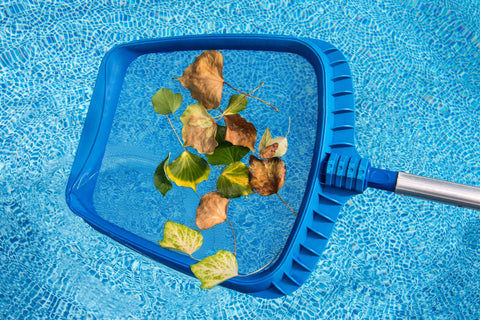At Benchmark Pool Supply, one issue we frequently see from customers and on our service route is a Polaris 280 floating or acting erratically in the pool. This problem is frustrating for pool owners who rely on these powerful cleaners to keep their pools clear and debris-free. Whether you’re using a Polaris 280 or Polaris 380, the root causes tend to be the same—and we’ll break them down here with professional insight based on real-world experience.
1. Air in the Line from the Booster Pump
The most common culprit behind a floating Polaris pool cleaner is air entering the system through the booster pump, often the Polaris PB4-60. When air leaks into the plumbing, it can be pushed down the pressure line into the pool sweep, causing it to float unnaturally or lose suction power.
How to check:
-
Inspect the fittings and connections from the Polaris PB4-60 booster pump to the wall port.
-
Look for bubbles at the wall connection or in the sweep hose—both signs of air infiltration.
-
Make sure all unions are tight and o-rings are lubricated and intact.
2. Clogged Debris Bag
Another frequent issue is a bag clogged with fine debris, such as silt, sand, or algae dust. When the bag is too full or clogged, water flow has nowhere to escape, causing pressure to build up and the sweep to become buoyant or behave erratically.
Fix:
-
Rinse or replace the Polaris debris bag regularly.
-
Consider switching to a fine-mesh or sand/silt bag if you're in an area with lots of fine particles.
3. Faulty Head Float (Polaris A20)
If your Polaris isn’t floating but instead laying on its side, this points to a different problem entirely: a compromised head float. The Polaris A20 head float, located on the back of the unit, is designed to keep the unit balanced. If it takes on water, it becomes heavy and causes the cleaner to tip over.
Pro tip:
-
Remove the A20 head float and shake it—if you hear or feel water inside, it’s time for a replacement.
-
Always keep an extra A20 on hand; it’s one of the most commonly replaced Polaris pool sweep parts.
4. Improper Hose Balance
Incorrect hose length or missing hose weights can also affect performance. A hose that is too short or improperly weighted can pull the sweep toward the surface.
Recommendations:
-
Make sure your hose is cut to the correct length for your pool shape and size.
-
Check for missing weights or improperly positioned floats.
5. Internal Blockages or Worn Parts
Don’t overlook the possibility of internal blockage or worn internal parts like the drive shaft, turbine, or bearings. If your Polaris 280 is several years old and starting to float or struggle, it might be time for a rebuild.
Suggested parts:
-
Polaris tune-up kit
-
Bearings, shaft, and drive system components
-
Replacement hoses and tail sweep
-
Polaris A20 head float
At Benchmark Pool Supply, we offer FREE in-store Polaris sweep rebuilds—you only pay for the parts that need replacing. Drop off your cleaner and let our experienced team get it running like new.
Conclusion: How to Keep Your Polaris 280 Running Smoothly
A floating Polaris 280 or Polaris 280 head float failure isn’t just inconvenient—it’s a signal that something in your system needs attention. Whether it’s air leaks from a Polaris PB4-60, a blocked debris bag, or a flooded head float, catching these issues early saves time and extends the life of your cleaner.
At Benchmark Pool Supply, we carry a full selection of Polaris pool sweep parts and offer expert advice from professionals who service over 11 million gallons of pool water every week.
Shop Polaris Replacement Parts & Booster Pumps:
-
Polaris PB4-60 Booster Pump
-
Polaris A20 Head Float
-
Polaris 280 Tune-Up Kits
-
Polaris Debris Bags
Visit us in Fresno or Clovis, or shop online 24/7 at BenchmarkPoolSupply.com




